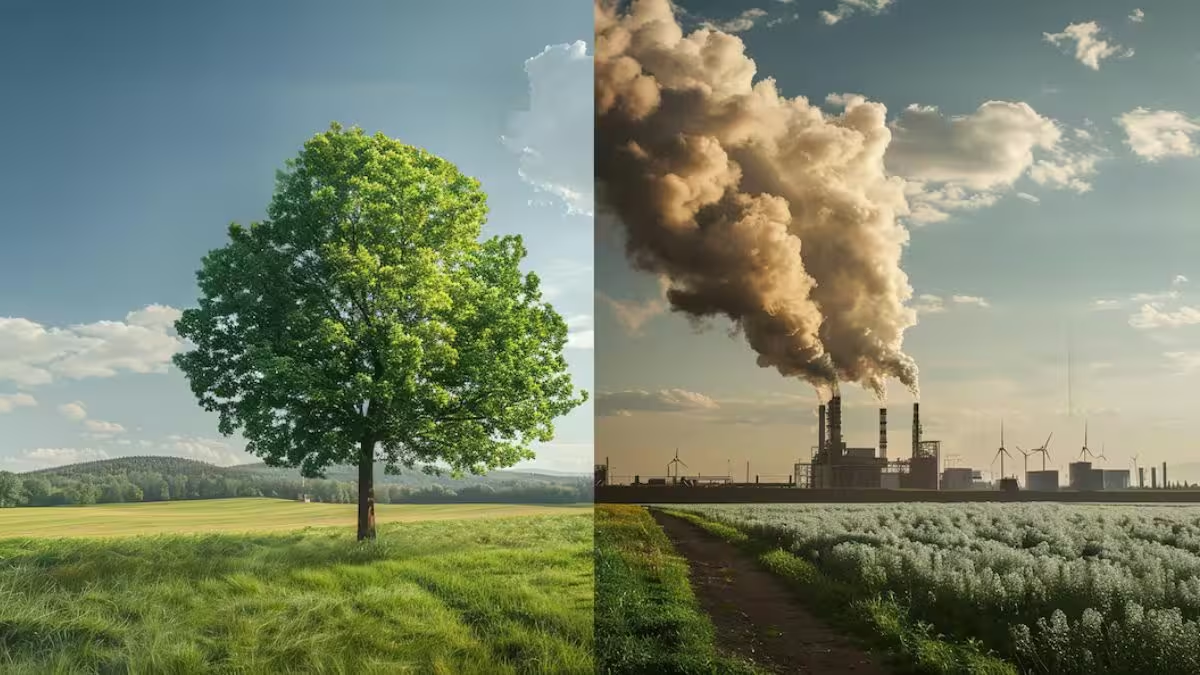Pollution is a global issue affecting the air we breathe, the water we drink, and even our general well-being. But pollution-levels can vary greatly depending on where you live. Today, we’re going to take a closer look at two places on opposite sides of the globe: Dorsten vs. Fresno, a town in Germany, and Fresno, a city in California, USA. How do they stack up against each other in terms of pollution? What factors impact their air quality, and what can each city do to improve? Let’s explore the answers and get a better understanding of the environmental quality in Dorsten and Fresno.
Dorsten–Fresno: The Pollution Overview
Unlike many large industrial cities, Dorsten has managed to keep pollution relatively low compared to other urban centers, but it still faces challenges, especially from nearby industries and motor vehicle traffic.
Key pollution sources in Dorsten include:
Vehicle emissions: With cars being a major form of transportation, vehicle exhaust is a primary pollution contributor.
Industrial influence: While Dorsten isn’t an industrial powerhouse, nearby cities contribute to air pollution that can affect Dorsten, especially during high-traffic or high-production periods.
Fresno, California, USA
On the other hand, Fresno is a larger city located in California’s Central Valley, where it often struggles with high levels of air pollution. Surrounded by agriculture and influenced by both local and regional industrial activity. it’s pollution challenges are more severe and frequently place the city among the most polluted areas in the U.S.
Some main pollution contributors in Fresno include:
Agricultural activities: Pesticides, dust from plowing, and machinery emissions from large-scale farming all contribute to Fresno’s air quality issues.
Vehicle and industrial emissions: As a growing city, Fresno experiences significant vehicle traffic, as well as emissions from various industries nearby.
Geographical location: Fresno’s valley location causes pollutants to become trapped, leading to poor air quality, especially during hot, stagnant days.
Comparing Air Quality and Pollution Levels
When we compare Dorsten and Fresno on pollution, it’s easy to see the differences in their air quality levels, pollution sources, and environmental challenges. Let’s break it down:
Air Quality Index (AQI)
Dorsten: On an average day, Dorsten’s air quality is rated “Good” on the Air Quality Index, meaning it’s generally safe to breathe. Due to lower emissions, Dorsten enjoys moderate air quality most days.
Fresno: Fresno, unfortunately, often falls into the “Moderate” to “Unhealthy” categories, particularly in warmer months. This means residents, especially those with respiratory issues, may face health risks from poor air quality.
Common Pollutants Dorsten vs. Fresno
Dorsten: The primary pollutants here are nitrogen dioxide and fine particulate matter (PM2.5) from vehicles, although the levels are typically within safe limits.
Fresno: Fresno faces higher concentrations of particulate matter (PM2.5) and ozone, both of which can cause respiratory problems, especially in vulnerable populations.
Seasonal Differences
Dorsten: The town sees some pollution spikes in winter, likely due to increased heating and vehicle emissions. However, seasonal changes don’t cause drastic pollution shifts.
Fresno: In Fresno, summer often brings higher ozone levels due to hot weather, while winter brings fog and stagnant air that trap pollutants, worsening air quality.
Health Impacts of Pollution in Dorsten and Fresno
The health impacts of pollution are significant in both cities, though Fresno faces a greater risk due to its higher pollution levels.
Dorsten: Residents here may occasionally experience minor respiratory issues, especially those with asthma or pre-existing conditions. But for most people, pollution levels aren’t typically a major health concern.
Fresno: In Fresno, the high pollution levels are linked to more severe respiratory problems. Studies have shown higher rates of asthma, bronchitis, and even cardiovascular issues in regions with poor air quality like Fresno. The impact is especially hard on children and the older people.
Solutions and Improvements: What Are They Doing About Pollution?
Both Dorsten and Fresno are taking steps to tackle pollution, though the strategies may vary based on local conditions.
Dorsten’s Approach
Promoting public transport: To cut down on vehicle emissions, Dorsten has been investing in public transportation, making it easier for people to choose eco-friendly options over driving.
Green initiatives: The town is also focusing on green spaces and tree planting to improve air quality naturally and create more breathable environments for residents.
Fresno’s Efforts
Regulating agricultural emissions: Since Fresno’s agricultural industry is a big pollution contributor, regulations have been put in place to limit harmful emissions.
Electric vehicle incentives: Dorsten vs. Fresno
To reduce car-related pollution, Fresno offers incentives for electric vehicles and has started to install more EV charging stations.
Community programs: Fresno’s local government is actively educating residents on ways to reduce personal pollution impact, from carpooling to energy-efficient practices.
Conclusion
While Dorsten and Fresno face different levels and types of pollution, both cities are working to improve air quality for their residents. Dorsten’s relatively low pollution levels make it a healthier environment overall, while Fresno’s challenges are more severe due to its agricultural and industrial activities combined with its geography. Nonetheless, both places offer valuable lessons on managing and improving air quality, showing that no matter the challenges, cleaner air is possible with effort and commitment.
FAQs
1. Which city has worse pollution levels, Dorsten or Fresno?
Fresno’ generally has higher pollution levels due to its agricultural and industrial activities, combined with its valley geography that traps pollutants.
2. What are the main sources of pollution in Dorsten?
Dorsten’s pollution primarily comes from vehicle emissions and nearby industrial activities.
3. Why is Fresno’s air quality often worse in summer?
Fresno’s hot summer temperatures can lead to higher ozone levels, and its valley location traps pollutants, worsening air quality.
4. Are there health risks associated with Fresno’s pollution levels?
Yes, Fresno’s pollution levels can lead to respiratory issues, especially among children, the elders, and people with pre-existing conditions.
5. What steps can residents in both cities take to reduce pollution?
Residents can help by using public transportation, reducing vehicle emissions, and supporting local initiatives aimed at improving air quality.




